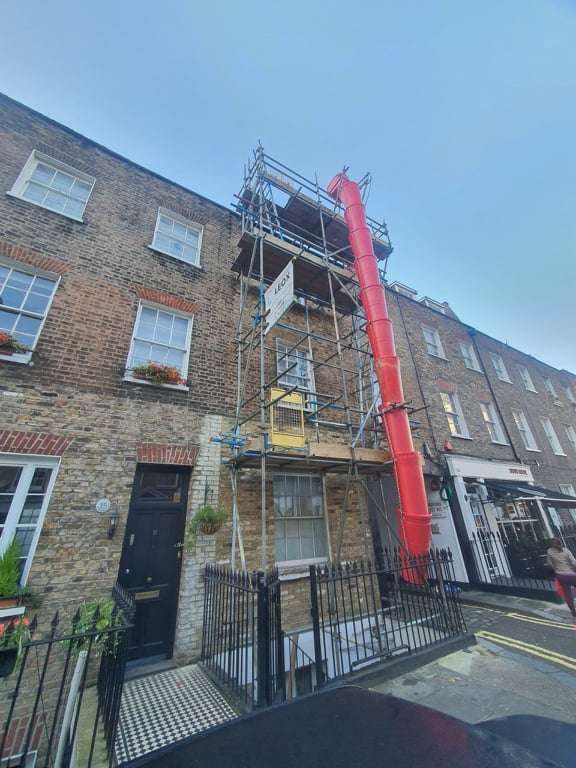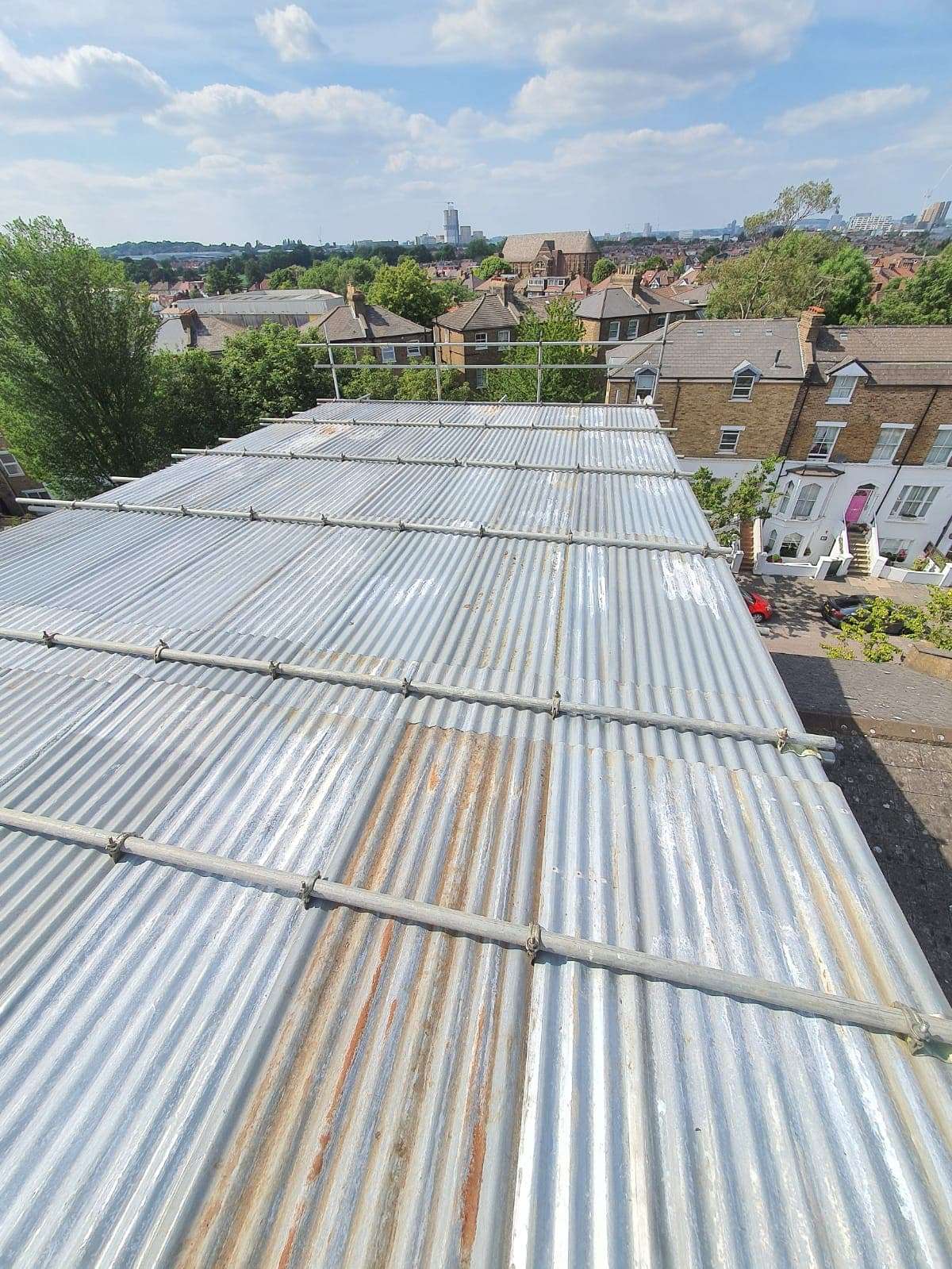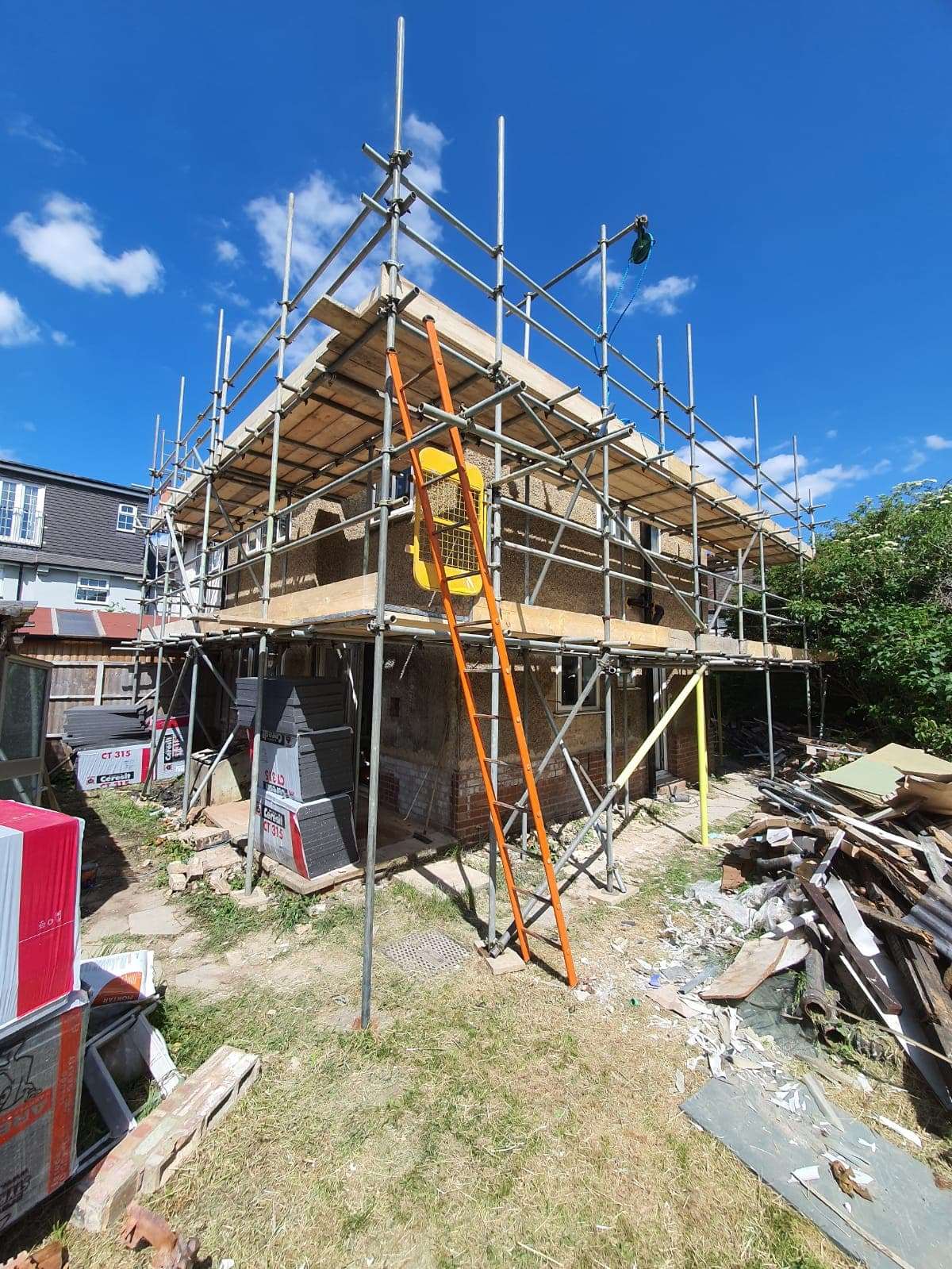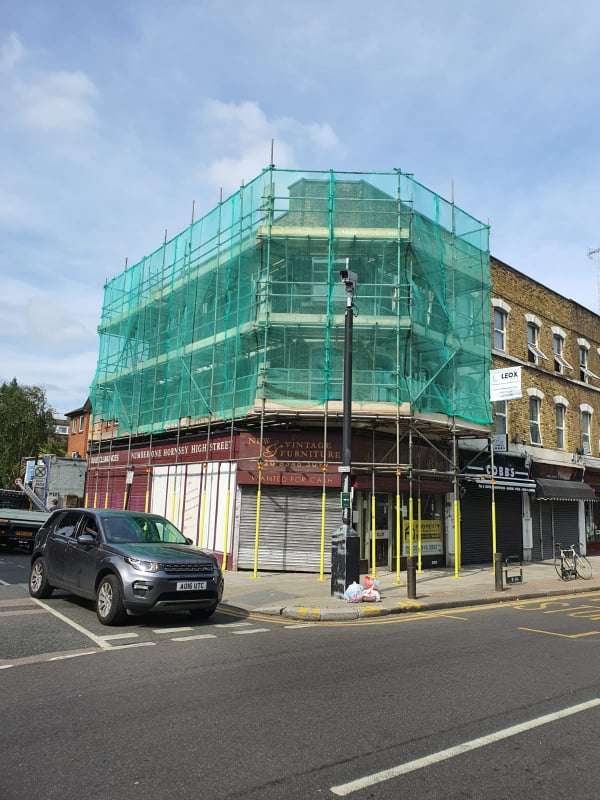Scaffolding is a framework of steel pipes or wooden supports that are assembled into a temporary structure; which provides a stable and strong platform for contractors, allowing them to reach difficult positions and work at heights, safely. The scaffolding needs to be stable and strong to support the weight of contractors and their tools.
What is tube and fitting Scaffolding?
Tube and fitting scaffolding is known by several names including tubular scaffolding. It is a specific type of scaffolding system that uses different-sized metal tubes joined together by clamps and couplers to produce a temporary strong and stable structure. It is not pre-assembled, which gives the benefit that any style structure can be made and can be added to.
What are the different types of scaffolding?
At LEOX Scaffolding, we supply several different types of scaffolding systems. Scaffolding is essential for the majority of construction projects. Different types of scaffolding are used, depending upon the needs of the construction team.
Scaffolding Temporary Roof
This type of scaffolding is a sheeted structure that provides cover to areas protecting them from dust, dirt and adverse weather. It can be positioned on the ground, on top of buildings or can be an extension of an existing scaffolding structure. It can have fully sheeted walls and a roof, or only a roof, or a roof with skirts.
Birdcage scaffold
Birdcage scaffold is commonly found in buildings when access is needed to high areas, such as ceilings. This scaffolding is independent of any existing scaffolding. It consists of multiple rows of standards that are connected by ledger beams. The top of the scaffolding is an accessible platform from where the contractors can work safely.
Independent scaffolding
This is commonly used to give access to building facades and for working at heights. It consists of 2 rows of vertical tubes called standards, erected parallel to buildings or walls. The standards are fastened together with horizontal ledgers which are joined with right-angle couplers to form horizontal levels known as lifts. This scaffolding stands independent of the building or wall.
When should you choose tower scaffold hire?
A tower scaffold is a raised platform and consists of various components including resting panels and stairways. It has additional support beams to increase its rigidity and strength. Its stability relies on how the components are fitted together so trained professionals must assemble it.
Bridging scaffold
A bridging scaffold is typically used to span across 2 points, either to span a break in the building or to protect specific areas such as a lawn or flowerbed. These are used by builders when working horizontally along a wall or building. They allow the builders to remain off of the ground as they work.
Gantry scaffolding
Gantry scaffolding is used when access to a bridge, platform or loading areas is needed by customers or builders during building work or other vital areas. It is used both on commercial and residential sites. The bridge is supported by a pair of towers that can move on parallel tracks.
Free-standing scaffolding
Free-standing scaffolding is independent of any other scaffolding or structure. It is stable and strong and can be supported by stabilisers, outriggers, counterweights or buttress bays. It is useful when contractors need to work at different heights around the construction as it can be moved easily.
What are the Scaffolding Alternatives?
What is the purpose of structural supports?
Shoring is a type of support that is used temporarily when a building or structure is being repaired or constructed. It is also used in trenches during excavations. It protects the structure from collapse during repair, alterations or construction.
Rope access scaffolding – an alternative for regular scaffolding
A commonly used alternative that can be used in place of regular scaffolding is roop access. Instead of temporary platforms, rope access uses abseiling from the top of the building, to access high areas. This alternative is often used when scaffolding is unable to be erected for whatever reason.
How long does it take to erect scaffolding?
It can take approximately between 2 hours and 2 days to erect scaffolding, depending upon the type of scaffolding and its size. Commercial and industrial projects require large scaffolding structures which can take a week to construct. It is important to know for any project the time it will take for the construction and deconstruction of scaffolding.
Can I erect my scaffolding?
Scaffold structures need to be designed and assembled by trained professionals. The erection and dismantling of any scaffolding structure should also be supervised by a competent overseer. This ensures that the scaffolding will be safe for use.
At what height do you require scaffolding?
Greater than four feet from a lower level is the height recommended for scaffolding use. In construction, scaffolding is required when the work is 6 feet above a lower level. When contractors are working at heights greater than 10 feet above a lower level, they are required to have fall protection.
When should scaffolding be inspected?
Scaffolding that is being used for a construction project has to be inspected before use and at 7-day intervals until it is dismantled. It also needs to be inspected following adverse weather conditions or any other environmental factor that may cause deterioration or alteration to the structure.




